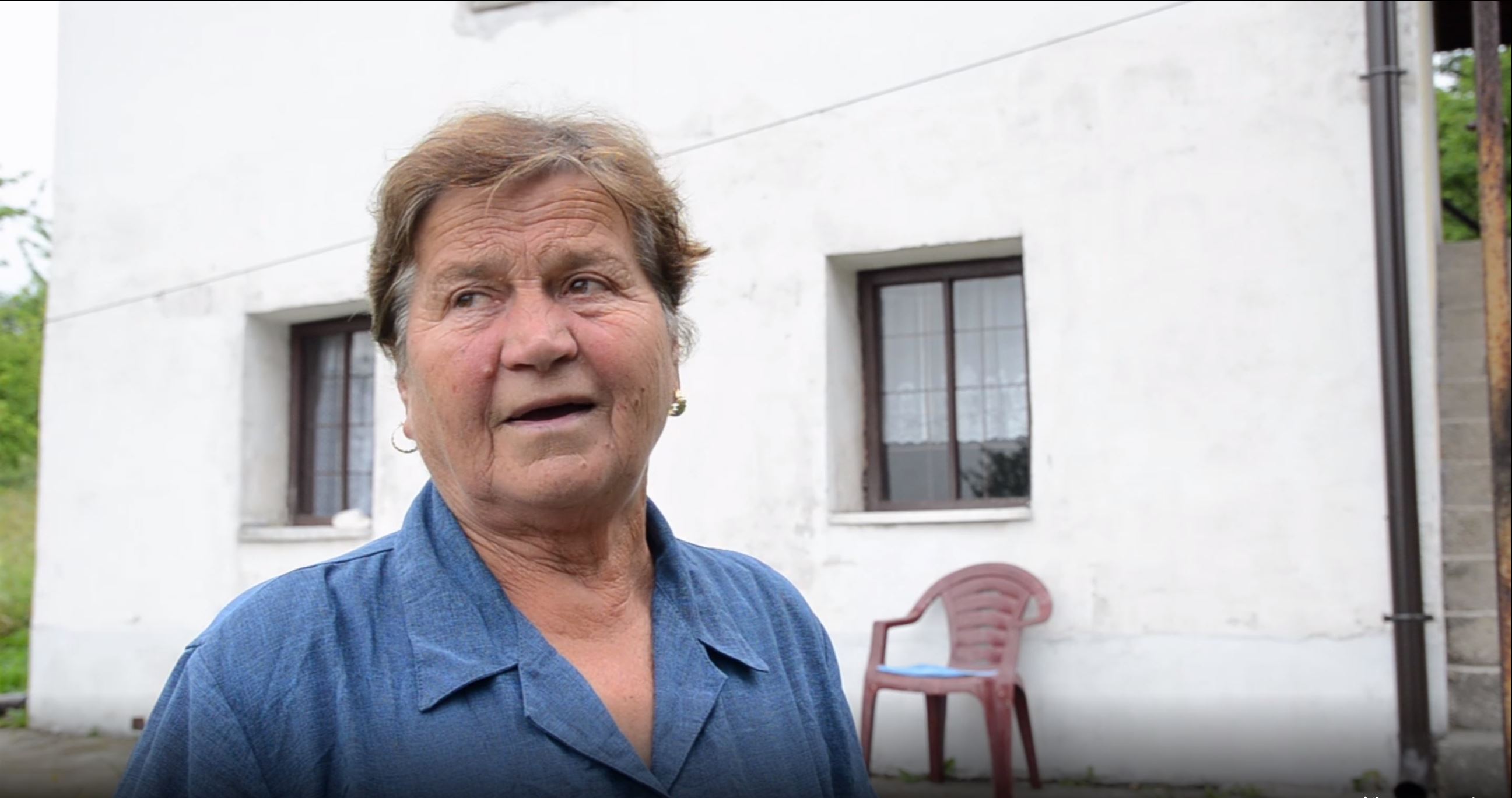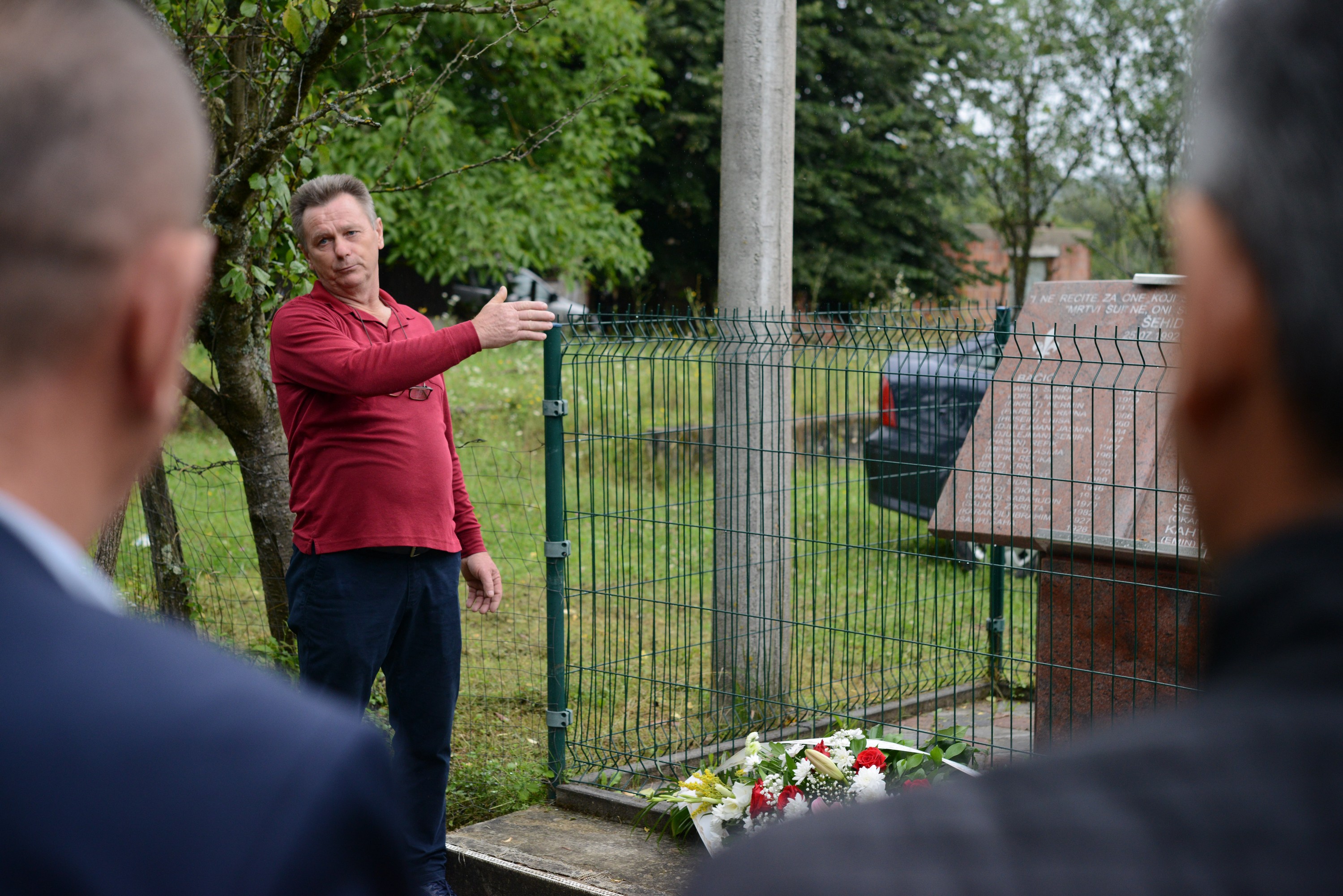When in April this year, in the midst of the pandemic, I joined a team of people working to mark unmarked sites of suffering in Bosnia and Herzegovina and research unmarked sites of suffering in Central Bosnia, I started reading through court judgements for war crimes committed in this area. Some of these places are well known today, they are marked as sites of killings and annual commemorations are held there. We were looking for those other places, places were crimes were committed but that remain unmarked, taboo, marginalised. These are abandoned places with no one to advocate for a monument or they are places where monuments are being disallowed because someone sees them as a threat, an uncomfortable reminder of responsibility for what was perpetrated… That is how we found Bilivode, Miletići and Rankovići in Central Bosnia, Mount Igman and Mount Bjelašnica around Sarajevo, in fact, that is how we found more than 80 sites throughout BiH…
When we were preparing the visit by war veterans and peace activists to commemorations for killed Croats and Bosniaks in Briševo and Zecovi near Prijedor, or when we attended commemorations in Vitez and Mostar, we read about how people were killed in those place, how they were expelled and their attempts to return. We heard about how Briševo was practically wiped off the map and barely exists today, how it is doomed to completely disappear in the near future, being overtaken by the forest and the undergrowth, without a road or any sign that it once used to be home to several hundred families. We wondered why even those who returned after the war are now leaving Zecovi, why the village does not have adequate water supply, electricity…
I’m not saying that talking about places isn’t important, context is necessary, it allows us to connect our personal experiences to the stories of broader communities, to recognise processes, the ask or try to answer important questions: how did it happen and why did it happen? But I want to say something else here, I want to separate the people from the places and tell their stories… Because ultimately, it is people, not places that touch us every time, they give us encouragement, motivation, as well as sorrow… Although we say our aim is to mark sites of suffering, the phrase seems to obscure the fact that we are marking the deaths and suffering of people, that we attend commemorations in order to express solidarity and support for victims’ families, to show people that they are not alone… Here are three stories, completely personal, as I have experienced them, that do not pretend to be anything more.
Come by…
Katica Mijač is 75 years old. She has been living alone since her husband died and has no children. She lives alone in a village that used to be home to some fifty families before the war. She lives alone in the village where she was born, where she got married and lived her whole life. Well, not exactly – she was expelled in the late summer of 1993, at the height of the Bosniak-Croat conflict in Central Bosnia, hers was the last Croat family to flee the village. She returned as soon as the Washington Agreement was signed, in the spring of 1994. The Bosniak-Croat conflict had ended by then, but those who remember that time know what it meant to come back home in 1994. She says she couldn’t bear staying away from home, in Busovača, neither she nor her husband could bear it, they longed to go home and continue where they had left off in the summer of 1993. As she shows me around her farm, she remembers how they would go out to work in the field, just the two of them, and how they would sing, whole-heartedly, their house covered in donated nylon sheets. But it was theirs.
Today, Katica is lonely, she keeps in touch with her sister, who has been living in Knin since the war and who keeps inviting her to come live there, but Katica cannot fathom living in Knin. She says she can understand her sister and Knin to a degree, but does not even try to understand those who have gone to Australia. The nuns come by to visit, she goes to mass at the local church, she does some work around the garden, she complains that there’s no one willing to mow the grass even for money. There are no people in the village, this has been known for a while now, and there are fewer animals too. The land that had once been wrested from the forest is now becoming forest again. In the village with no people or animals, there are unmarked sites of suffering from the past war. As she leads us to the site where her neighbour was killed, she complains about the “weekenders” who steal her water and the Municipality that does nothing. She also complains about those that trampled the candle she had lit at the site where her neighbours were killed and that remains unmarked to this day. To both the “weekenders” eager to build their weekend houses and the Municipality that would prefer to turn a blind eye, Katica presents a problem because she refuses to leave, or to die. She makes noise, carries water from the spring because hers was stolen, goes around the municipalities to report them, she simply won’t give up. She tells us to come by sometime, that she will look after the signs we put up at the sites of killings and tell us how long they lasted.

You’ve probably seen Fikret Bačić’s face on the news sometime in late May. In late May this year, as well as last year, as well as a few years back too. Each year since 2012, at the end of May, Fikret comes out with a reminder and a demand, and will not give up on building a monument for 102 killed children of Prijedor, including his own two children – Nermin and Nermina. If you were in Prijedor on White Armband Day, Fikret was the man at the end of the peaceful and dignified procession – one of the most touching commemorations I have ever attended – who gave a short speech. In measured, carefully weighed words, Fikret is demanding that children, whose innocence in incontestable, should be given a dignified memorial, in the city centre and not in some corner or the yard of a religious building. This is a struggle not just for a monument, but for the right to be remembered that has managed to withstand all manipulations since 2012 and to remain pure, persevering and dignified.
Today, Fikret lives in Zecovi, struggling to feed his new family that he started after his whole family was killed in 1992, his two children, his wife, mother and 30 other relatives. As he struggles to ensure water and electricity for the living, for years he has been actively seeking the remains of his loved ones that have never been found. As a member of the Advisory Board at the Missing Persons Institute, a board made up of victims’ families, he tells us how families seeking their loved ones are left to their own devices, forced to pay for information about the locations of mass graves, to go and dig up acres and acres of land themselves in an effort not to lose their last ray of hope. Just that statement – families paying for information about a mass grave where they may find the bones of their loved ones – contains more than you can fathom.
Fikret and his family have built a monument in memory of his 30 relatives killed in 1992 in Zecovi. Together with his nephew Zijad Bačić, who survived the execution of his family as a boy, Fikret goes around Bosnia and Herzegovina with other survivors and participates in public speaking programmes. They say they will never give up on searching for their loved ones, that they will never forgive the killers, that it is solely their right to forgive or not forgive, that they will insist on the prosecution of the killers, that they understand the pain of other victims and that guilt is individual…

Come, whoever you are, just come…
Ivan Garić’s brother was killed on 10 June 1993, while he and his sister were severely wounded and his sister later succumbed to her wounds in Split. A shell fired from the position of the Army of BiH that day killed eight children at a site that today symbolically bears the unofficial name of “the Eight”. Every year, several hundred people gather at “the Eight” refusing to let the killed children be forgotten. It is an intimate commemoration organised by Ivan, his parents and the families of the other killed children. Ivan initiated the building of the monument, fought for its legalisation and maintenance. When we met with him on the day of the commemoration in order to get to know each other better before our attendance, we spent more than two hours in conversation, being inspired and encouraged. At the commemoration, Ivan introduced us to his parents, we also met the parents of the other killed children, and the commemoration itself, without officials or strict protocols, spontaneous as much as it was organised, was filled with such emotion that it is difficult to describe. Simply put, it was an open invitation: come and be with us in our pain, come, whoever you are, just come (Rumi).
These three stories did not tell you much, almost nothing about Bilivode, or Zecovi, or Vitez, or the war, the return, the peace… But then again, it sometimes seems to me that everything is contained in stories like these. And there are more stories to tell, such as the one about Edin from Prijedor who met Zdravko from Briševo this summer, about Adnin from Mostar with whom we commemorated those killed at Uborak and Sutina, among them his parents, about Stane, a war veteran and prison camp survivor, a long-time peace activist whose story could not fit into a book, let alone a short article like this one, and who always humbles us with his dedication to the idea of reconciliation, about Novica from the south of Serbia… There are hundreds, thousands more stories to tell.